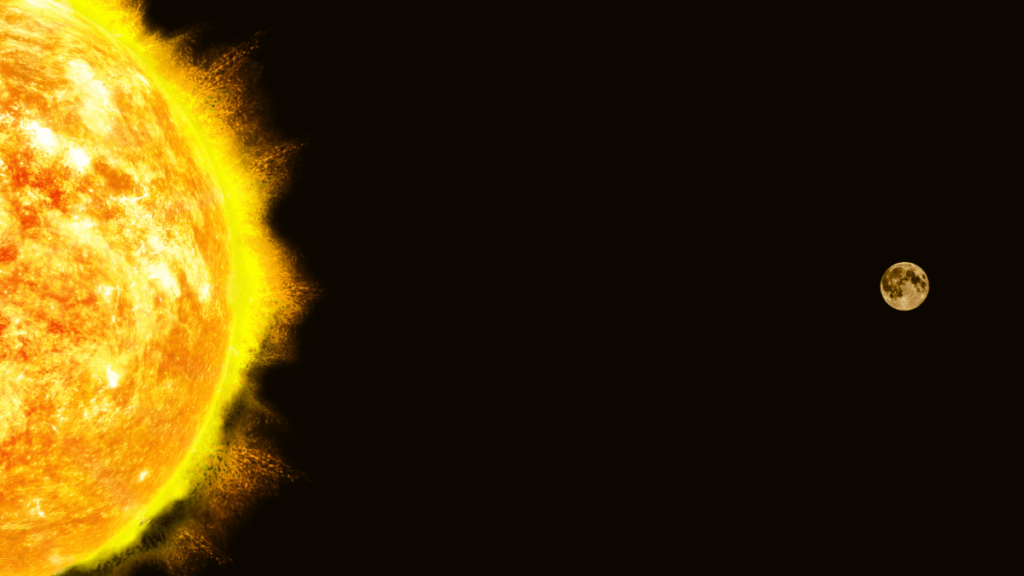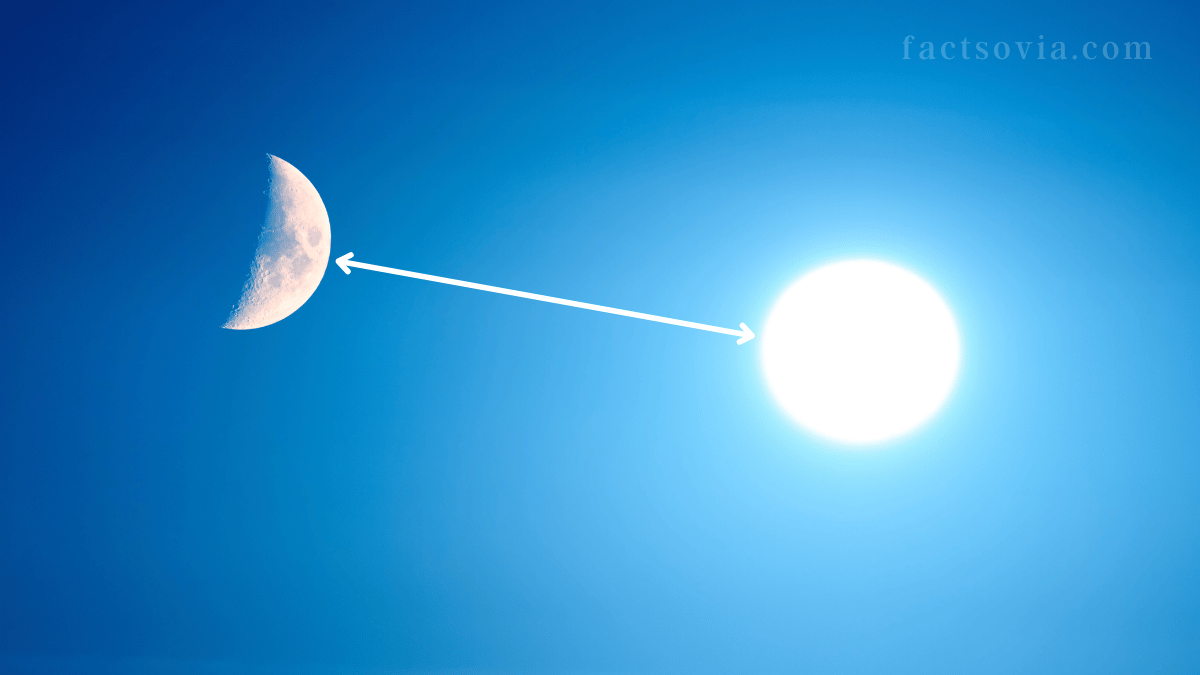We use affiliate links to run our site. When you buy through links on our site, we may earn an affiliate commission, without any added cost to you. Learn more
Have you ever wondered about the vastness of space and the celestial bodies that exist beyond our planet? One of the most fascinating questions in astronomy is the distance between the Moon and the Sun.
In this article, we will delve into the incredible distances that separate these celestial entities and explore the significance of their positioning in our solar system.
Understanding Astronomical Units (AU)
Before we dive into the specific distance between the Moon and the Sun, let’s first understand the unit of measurement commonly used in astronomy – the Astronomical Unit (AU). An AU is an average distance between the Earth and the Sun, approximately 93 million miles or 150 million kilometers.
The Average Distance from the Moon to the Sun
To determine the distance from the Moon to the Sun, we need to consider the varying positions of these celestial bodies due to their elliptical orbits.
On average, the Moon is about 1 AU away from the Sun. Therefore, the average distance between the Moon and the Sun is also about 93 million miles or 150 million kilometers.

Perigee and Apogee: The Extremes
The Moon’s orbit around the Earth is not a perfect circle, which means its distance from the Sun can vary significantly. The point in the Moon’s orbit where it is closest to the Sun is called the perigee. Conversely, the point where it is farthest from the Sun is known as the apogee.
During perigee, the Moon can be approximately 0.0024 AU closer to the Sun than the average distance, which is about 225,623 miles or 363,104 kilometers.
On the other hand, during apogee, the Moon can be approximately 0.0027 AU farther from the Sun than the average distance, which is about 252,088 miles or 405,696 kilometers.
The Impact of Distance on the Moon
The varying distances between the Moon and the Sun have an impact on our planet. The gravitational pull of the Sun on the Moon causes tides on Earth.
During a new or full moon, when the Moon, Earth, and Sun are aligned, the gravitational force is at its strongest, leading to higher high tides and lower low tides, known as spring tides.
Conversely, during the first and third quarters of the Moon, when it is at right angles to the Earth and the Sun, we experience neap tides, which are less extreme.
The Distance’s Role in Eclipses
The relative positions of the Moon and the Sun are also essential for solar and lunar eclipses. A solar eclipse occurs when the Moon passes between the Earth and the Sun, casting its shadow on Earth’s surface. During a solar eclipse, the Moon covers the Sun entirely, blocking its light and creating a remarkable celestial event.
Similarly, a lunar eclipse occurs when the Earth is positioned between the Moon and the Sun. During this phenomenon, the Earth’s shadow falls on the Moon, causing it to darken and sometimes even take on a reddish hue, giving rise to the term “blood moon.”
The Journey to the Moon
The distance between the Moon and the Sun has also played a vital role in human space exploration. Understanding the Moon’s position relative to the Sun was crucial for the success of manned missions to our lunar neighbor.
The Apollo missions, for example, had to be precisely timed to ensure safe travel to and from the Moon.
Conclusion
In conclusion, the distance between the Moon and the Sun is approximately 1 AU or 93 million miles/150 million kilometers. However, due to the Moon’s elliptical orbit, this distance can vary during perigee and apogee.
This distance not only affects the tides on Earth but also plays a significant role in solar and lunar eclipses. Moreover, it has been a critical factor in planning and executing human missions to the Moon.
The cosmos is full of wonders, and understanding these celestial distances allows us to appreciate the marvels of our solar system.
FAQs
How long does it take for light from the Sun to reach the Moon?
Light from the Sun takes approximately 1.28 seconds to reach the Moon.
Is the distance between the Moon and the Sun constant?
No, the distance varies due to the elliptical orbits of both celestial bodies.
How does the distance to the Sun affect the Moon’s temperature?
The distance plays a role, but the Moon’s lack of atmosphere is the primary reason for extreme temperature variations.
Can the Moon ever completely block the Sun?
Yes, during a total solar eclipse, the Moon entirely blocks the Sun from view.
Amazon and the Amazon logo are trademarks of Amazon.com, Inc, or its affiliates.
